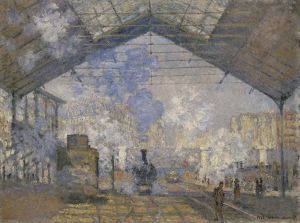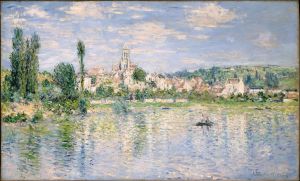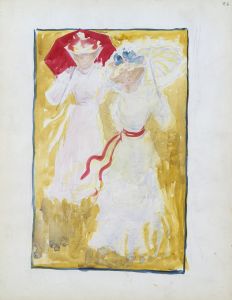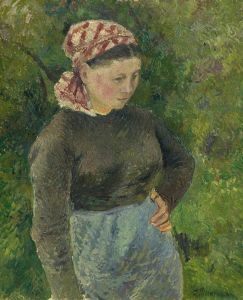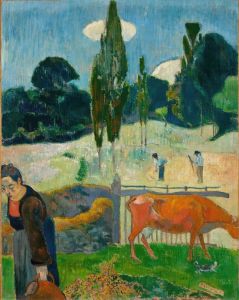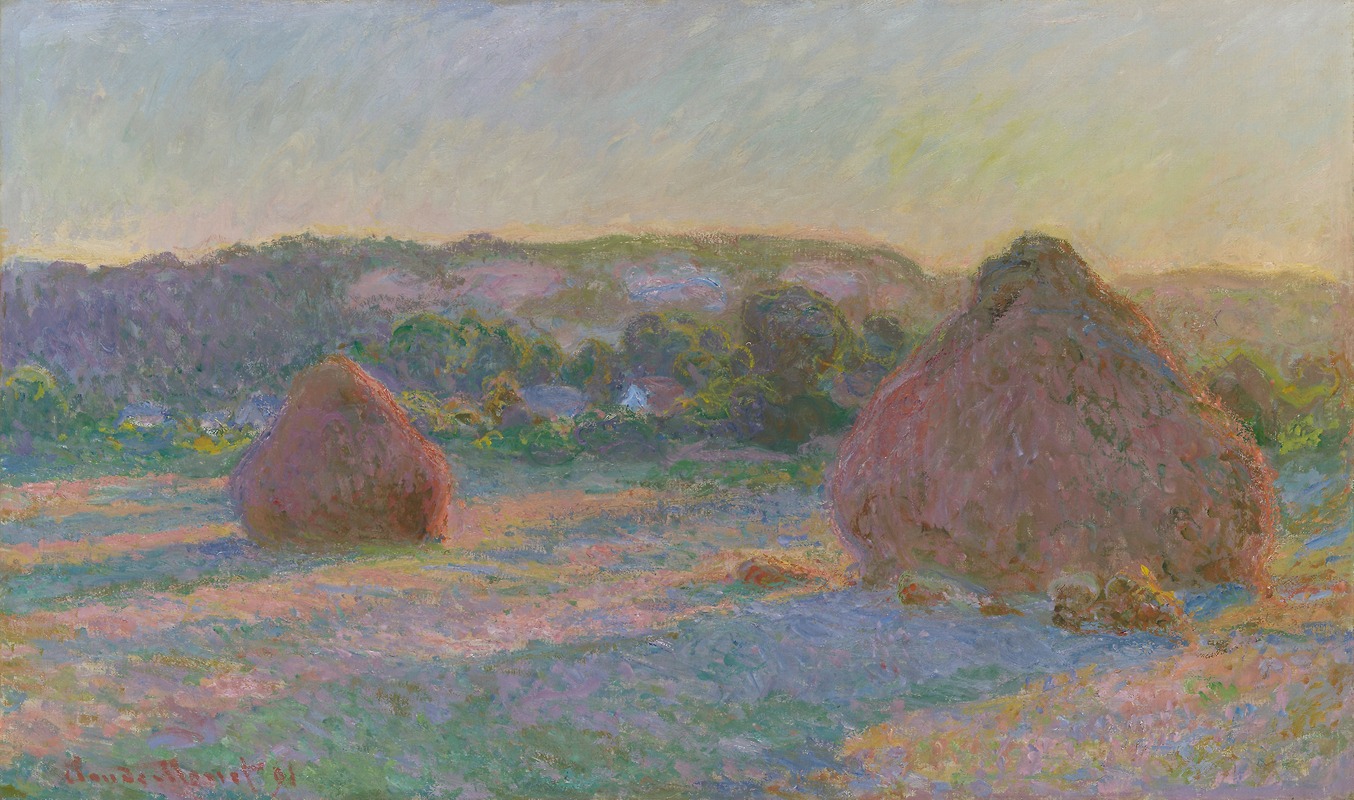
Stacks of Wheat
A hand-painted replica of Claude Monet’s masterpiece Stacks of Wheat, meticulously crafted by professional artists to capture the true essence of the original. Each piece is created with museum-quality canvas and rare mineral pigments, carefully painted by experienced artists with delicate brushstrokes and rich, layered colors to perfectly recreate the texture of the original artwork. Unlike machine-printed reproductions, this hand-painted version brings the painting to life, infused with the artist’s emotions and skill in every stroke. Whether for personal collection or home decoration, it instantly elevates the artistic atmosphere of any space.
"Stacks of Wheat" is a series of oil paintings created by the French Impressionist artist Claude Monet between 1890 and 1891. The series, also known as "Haystacks," consists of 25 canvases that depict stacks of harvested wheat in the fields near Monet's home in Giverny, France. These paintings are celebrated for their innovative exploration of light, color, and atmosphere, as well as their focus on the passage of time and changing seasons.
Monet painted the "Stacks of Wheat" series en plein air, a technique that involves painting outdoors to capture the natural light and environment. Each painting in the series portrays the same subject—a stack or stacks of wheat—but under varying conditions of light, weather, and time of day. Monet's meticulous attention to these changes allowed him to study how light and shadow interacted with the subject, creating a dynamic and ever-changing visual experience.
The series is considered a landmark in the development of Impressionism and modern art. Monet's approach to painting the same subject repeatedly under different conditions was groundbreaking at the time and demonstrated his commitment to capturing the ephemeral qualities of nature. This method also reflected his interest in the scientific study of light and color, which was influenced by contemporary theories of optics.
The "Stacks of Wheat" series was first exhibited in 1891 at the Galerie Durand-Ruel in Paris, where it received critical acclaim. The paintings were praised for their innovative technique and their ability to convey the transient beauty of the natural world. The series also marked a turning point in Monet's career, solidifying his reputation as one of the leading figures of the Impressionist movement.
Today, individual paintings from the "Stacks of Wheat" series are housed in major art museums and private collections around the world, including the Musée d'Orsay in Paris, the Art Institute of Chicago, and the Metropolitan Museum of Art in New York. The series remains one of Monet's most iconic and influential works, exemplifying his mastery of light, color, and composition.







